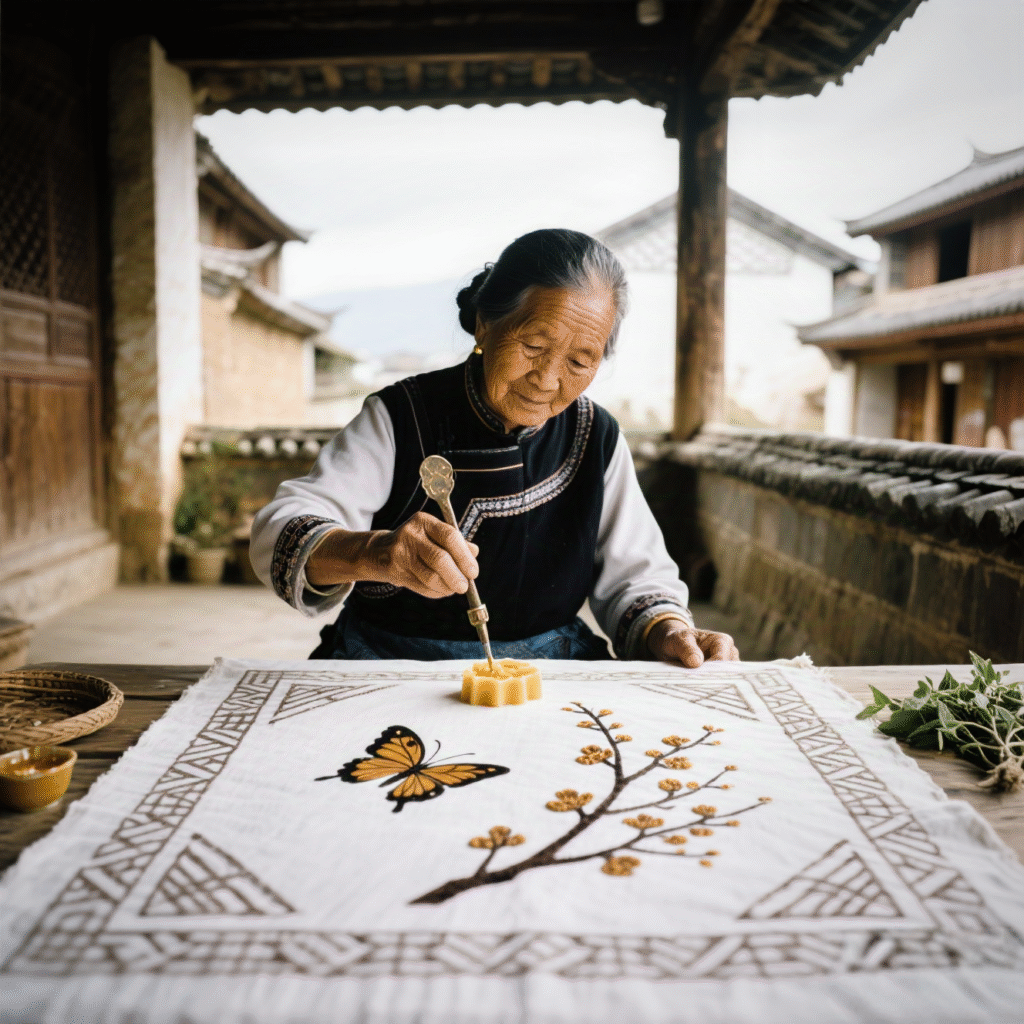Indigo Dreamscape:
The Imprint of Time in Dali Bai Tie-dye

In Zhoucheng, Dali, Yunnan, the air carries a faint scent of isatis root (Bǎn Lán Gēn, 板蓝根). A Bai grandmother sits in the courtyard, dipping a special copper wax knife into warm beeswax. With fluid strokes, she traces butterflies, plum blossoms, or geometric patterns onto pure white cotton cloth. Waxed areas will resist dye, staying white through the indigo bath.
The cloth is repeatedly immersed, oxidized, and dipped—shifting from green to blue, light to deep.
Finally, boiling water melts the wax away, revealing the stunning blue-and-white tie-dye fabric: fresh, elegant, and unique in every motif, breathing with handmade vitality.
Tie-dye——Anciently Called JiaoXie
Is China’s ancient resist-dyeing technique. Preserved most completely among the Bai people in Dali, it is a vital ICH project.
Its magic lies in the “ice crack textures” (Bīng Liè Wén Lǐ, 冰裂纹理)—natural fissures where dye seeps through folded and bound sections, creating unrepeatable patterns like crackled porcelain. This serendipitous artistry perfectly embodies the Daoist philosophy: “Dao follows nature” (Dào Fǎ Zì Rán, 道法自然).

Eastern life aesthetics

Today, tie-dye transcends Bai courtyards. A handmade wax-resist indigo table runner brings mountain breeze to dining tables; a botanically dyed linen-cotton dress channels rustic simplicity; a blue-and-white tie-dye wall hanging infuses spaces with serene Eastern Zen.
Step into an ICH tie-dye workshop—bind, dip, and dye with your hands—to deeply feel the beauty of this natural dye artistry, tracing the imprints of time flowing through indigo and white.